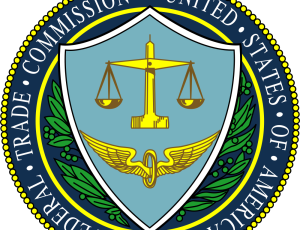With confusion among the key elements in nonprofit managers’ minds when it comes to the Affordable Care Act (ACA), the Small Business Administration (SBA) and the Internal Revenue Service (IRS) have released guidelines explaining how to implement the 2010 law’s provisions.
One of the most talked about provisions of the ACA, often referred to as “ObamaCare,” is the Small Business Health Options Program (SHOP), which is designed to provide employees affordable healthcare options through state Marketplaces. This program goes into effect on January 1, 2014. While all employers covered by the Fair Labor Standards Act were required by law to notify their employees by October 1 about its existence, not all will be eligible to offer employees SHOP-based plans.
The IRS and SBA guidelines are divided into three categories: Organizations with 50 or more employees; fewer than 50 employees; or, fewer than 25 employees. As of 2014, only those organizations with up to 50 employees will be able to offer employees health insurance through SHOP. It will not be open to organizations with up to 100 employees until 2016. All employees are able to purchase plans through SHOP on their own, though they might lose the employer contribution to any health benefits plan offered by the employer.
SHOP Marketplaces will be available in all 50 states. Some states are further ahead of the curve than others. Because of this, enrolling in these programs could be problematic but not altogether impossible.
Since the enrollment period started Oct. 1, “there is still quite a stretch of time until January 1 allowing all the pieces to fall in place,” said Jennifer Chandler, vice president at the National Council of Nonprofits (NCN) in Washington, D.C. The online Marketplace enrollment system is running, so there is time for nonprofits to get their ducks in a row, look at their budgets, and decide whether they want to investigate what’s available in the Marketplace before the beginning of the year, she said.
Chandler explained the benefits in enrolling in a SHOP plan: “Small organizations don’t have a lot of leverage, so [SHOP] should give nonprofits opportunities that didn’t exist before,” she said. “And presumably, these plans would meet the minimum standard of care that the government requires.”
That minimum standard of care comes into play for larger organizations in the form of Employer Shared Responsibility Provisions instituted by the ACA. Beginning in 2015, organizations with 50 or more full-time employees (at least 30 hours a week) that do not offer affordable health insurance that provides that standard of care to their full-time employees might be required to pay an assessment if at least one of their full-time employees is certified to receive a premium tax credit in an individual health insurance Marketplace. This is designed to offset the cost of the Marketplace premium tax credits.
As defined by the government, the minimum standard of care for health insurance is:
- Ambulatory patient services (outpatient care you get without being admitted to a hospital);
- Emergency services;
- Hospitalization (such as surgery);
- Maternity and newborn care (care before and after your baby is born);
- Mental health and substance use disorder services, including behavioral health treatment (this includes counseling and psychotherapy);
- Prescription drugs;
- Rehabilitative and habilitative services and devices (services and devices to help people with injuries, disabilities, or chronic conditions gain or recover mental and physical skills);
- Laboratory services
- Preventive and wellness services and chronic disease management; and,
- Pediatric services.
The big change for those organizations with 25 or fewer employees is Small Business Health Care Tax Credits. Currently, small organizations that pay average annual wages less than $50,000, and that contribute 50 percent or more toward employees’ self-only health insurance premiums may qualify for a small business tax credit of up to 35 percent to help offset the costs of insurance. In 2014, this tax credit goes up to 50 percent and will be available to qualified small employers that participate in the SHOP program.
As Chandler explained, this was a provision nonprofits were lobbying for when health care reform was first being discussed. “This was a tremendous victory for the nonprofit community but there hasn’t been much messaging about it,” she said. Many organizations are unaware of how the tax credit worked and if they were even eligible for it.
There are a multitude of reasons why there has been confusion, but Chandler believes it has to do with the way the government is wording their message. “We noticed that the official messaging about the Affordable Care Act was all about how health care reform affects individuals and ‘businesses’ — when in fact any employer, whether nonprofit or for-profit, is going to be affected,” explained Chandler. “After [NCN] pointed this out, to their credit the IRS, and the Small Business Administration, and even HHS/Office of Faith Based and Community Partnerships made changes in the language used on some web pages to refer to ‘nonprofits’ in addition to businesses.” She pointed to one example of this change by referring to the government’s page explaining how SHOP works (https://www.healthcare.gov/what-is-considered-a-small-business/).
“In our experience we’ve found that – understandably – nonprofit professionals pay more attention when the message they hear is tailored to their own environment,” she said.
You can find out more about how the ACA will affect your nonprofit by visiting http://www.councilofnonprofits.org NPT











